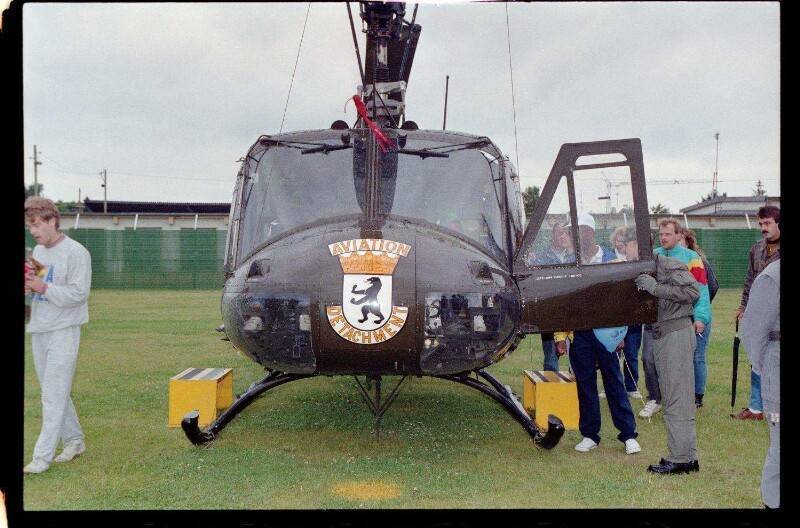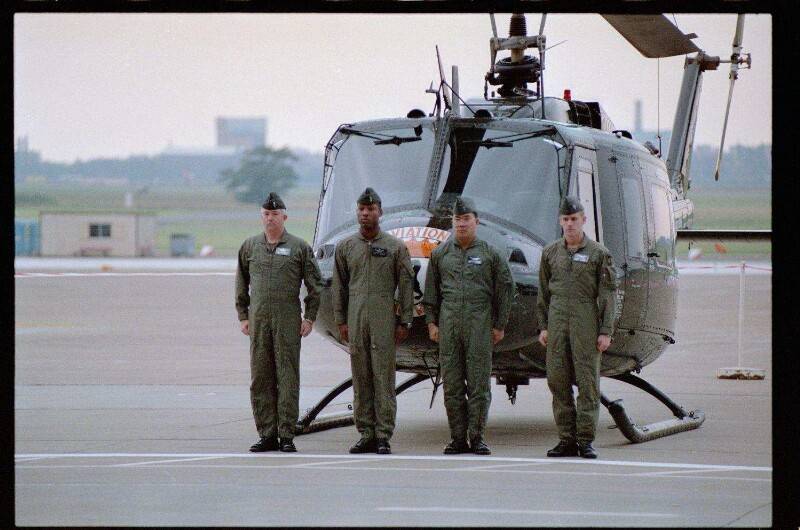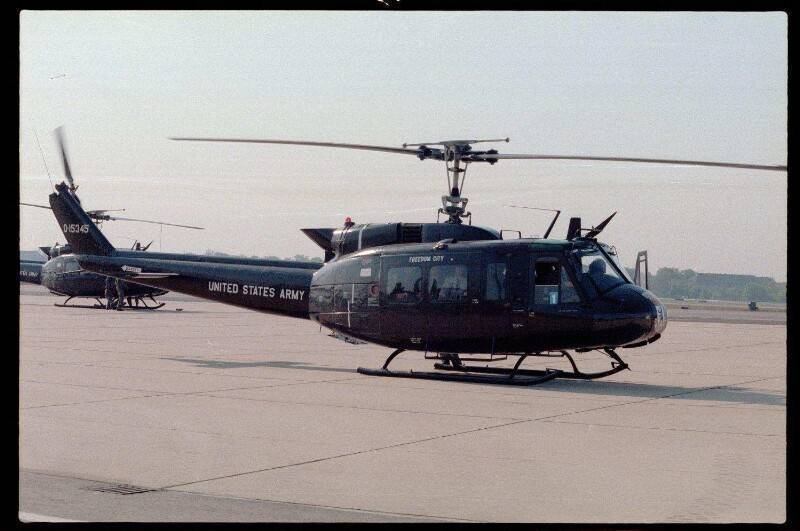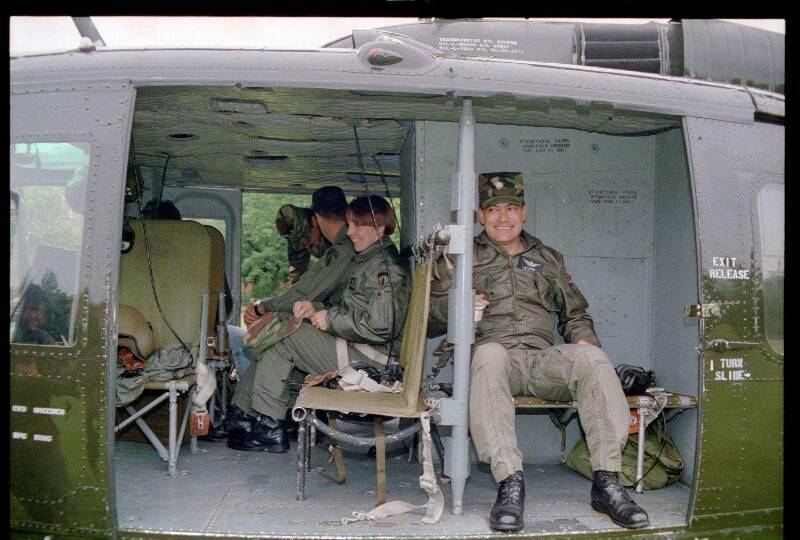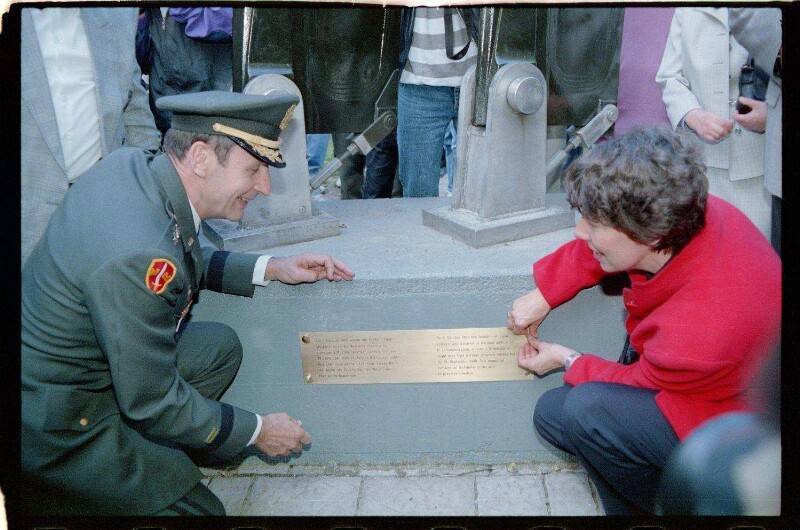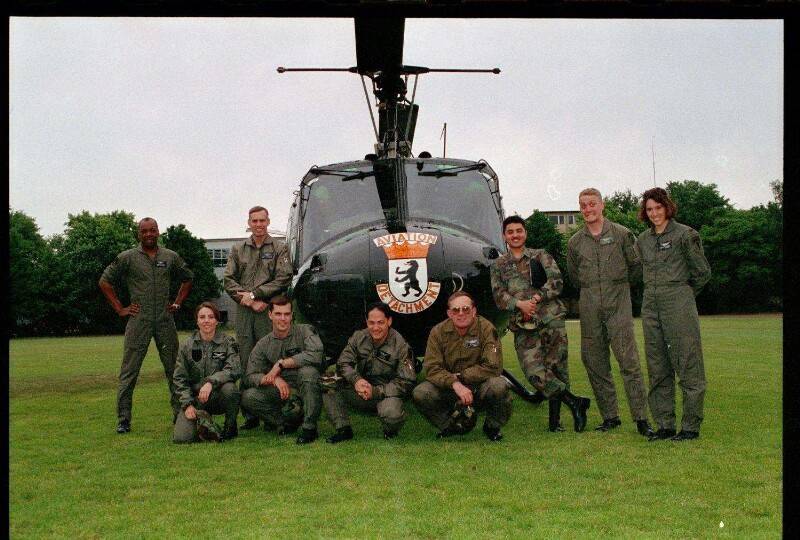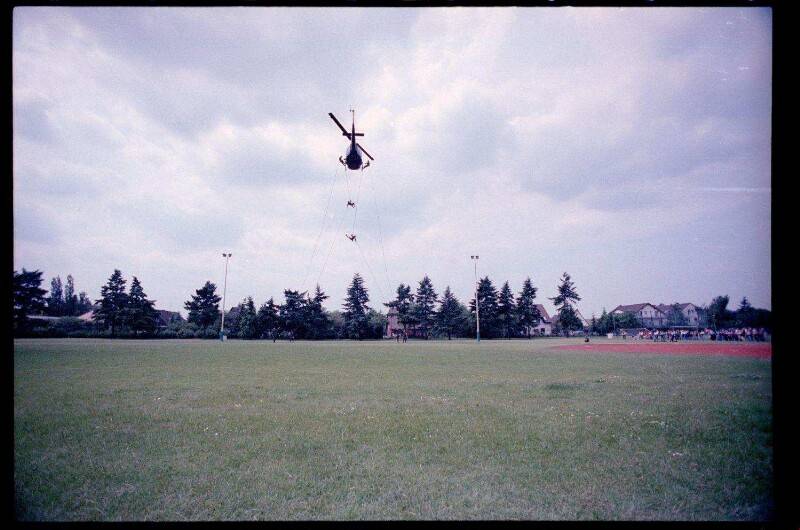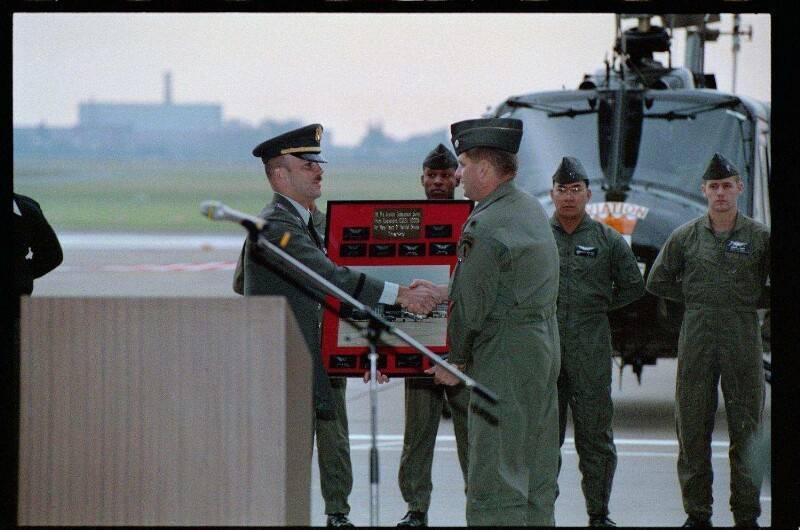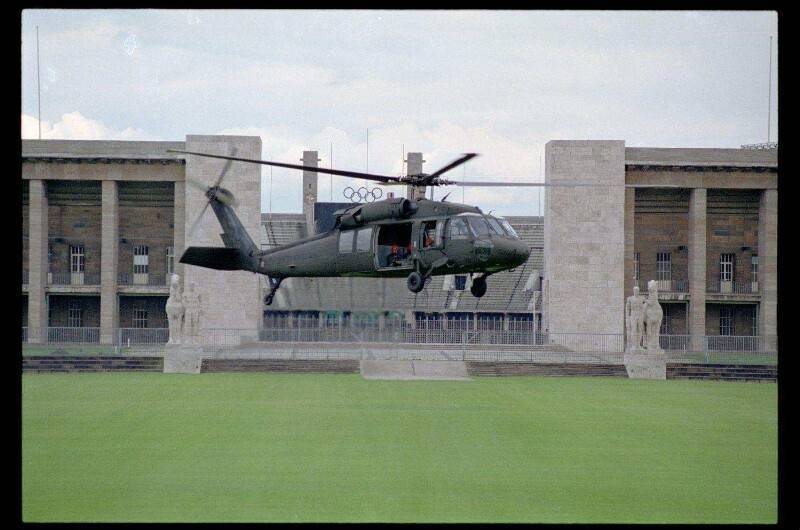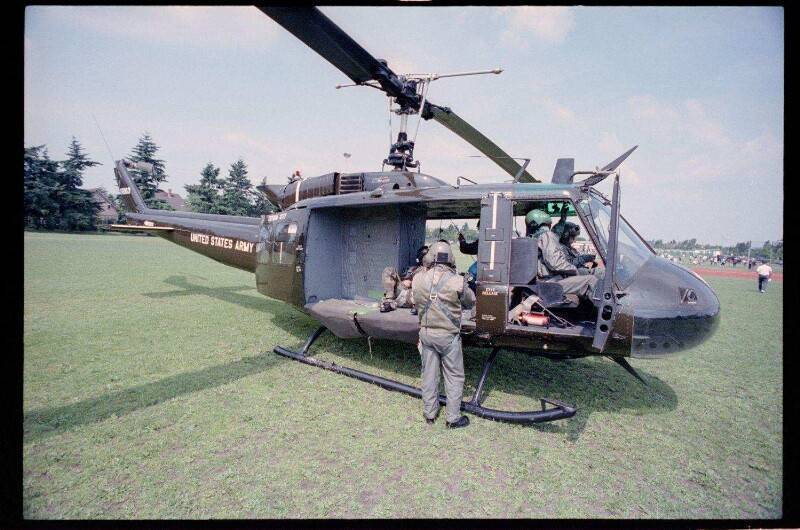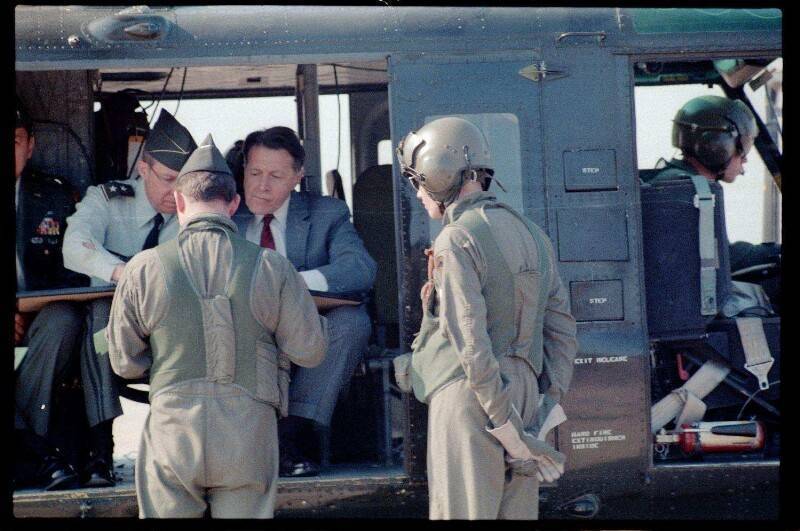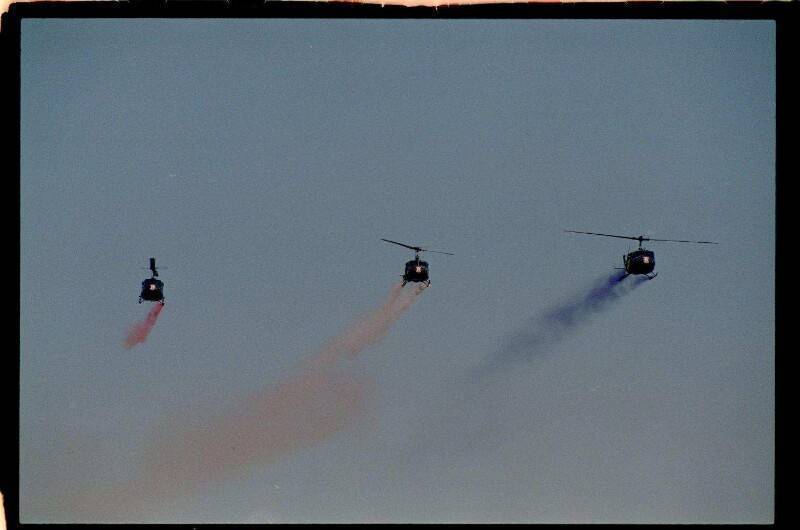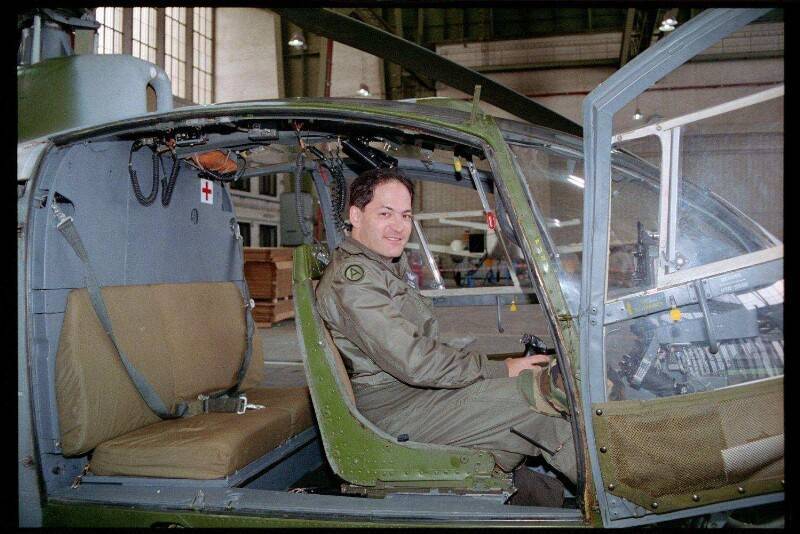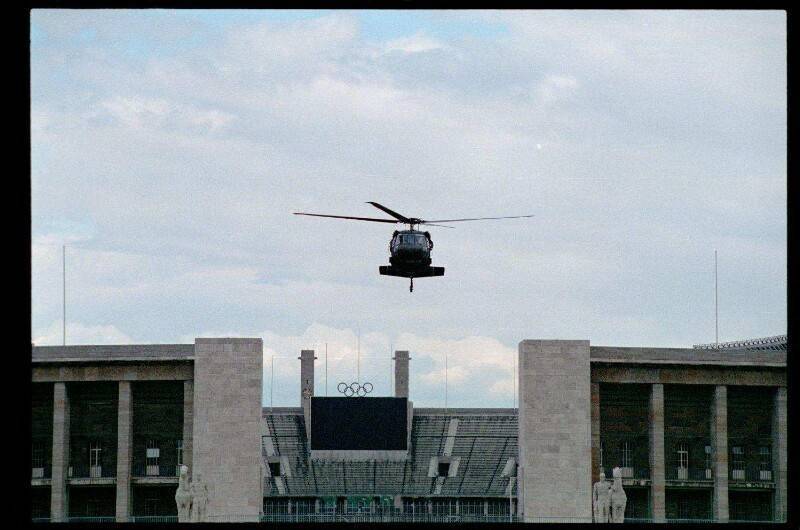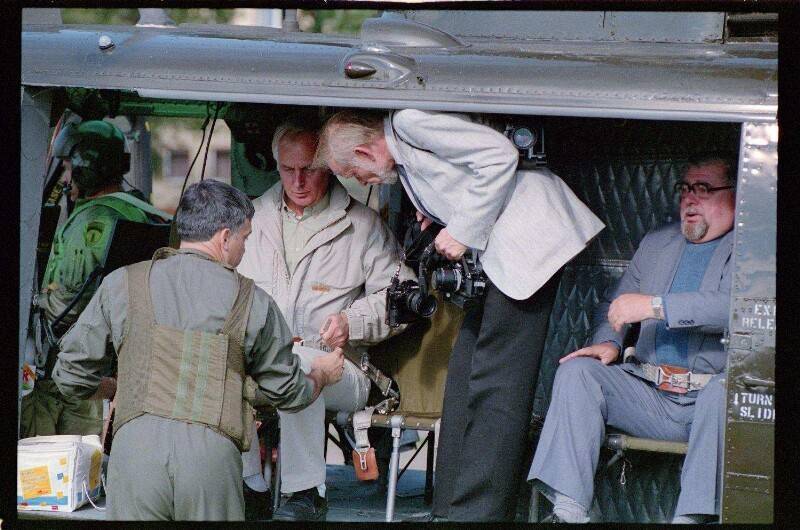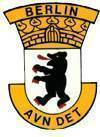
The Detachment is located at Tempelhof Air Base (an Air Force installation). Its hangars are close to the commercial side of the airfield.
One of the missions of the detachment is to run helicopter patrols (aerial surveillance) along the Berlin Wall and rest of the border surrounding West Berlin — to supplement other (jeep and boat) border reconnaissance missions performed on the ground by other elements of Berlin Brigade. These border patrol flights have been going on since the late 1940s.
The short flight (US Sector only) is run daily – once or twice a week the Det runs a long flight that encompasses the British and French sectors. A regular patrol crew consists of pilot, copilot, crew chief and a Brigade G-2 observer (who is picked up at Andrews Barracks).
Other missions of the Det include brigade troop lifts in support of field exercises and border orientation flights for visitors, including British and French officials. (British and French forces in Berlin do not maintain helicopters in their sectors.)
Routinely, one helicopter is used to fly in supplies to Army MP’s who are assigned guard duty in the Steinstuecken Enclave.
Berlin’s Aviation Detachment has only nine aircraft, yet the pilots manage to log between 2,300 – 2,500 hours annually, and from Oct. 1, 1987 – Sept. 30, 1988 they did so with a zero aviation accident rate.
That fact will be recognized today when U.S. Commander, Berlin, Maj. Gen. Raymond Haddock, presents the detachment with a USAREUR and Seventh Army certificate of achievement for aviation safety.
Berlin’s Aviation Detachment is relatively small. With a fleet of six UH-1 Huey helicopters, one C-12 airplane and two observation planes, the detachment supports the city by flying a variety of missions including VIP support, tactical training with U.S., British and French troops; assistance to Polizei and water police; and, transport missions to various parts of Europe. The helicopters, however, each emblazoned with „Freedom City“ on the shiny, green skin, stay in the city.
The detachment’s maintenance facilities include two overhead hoists, and the mechanics and technical inspectors do all authorized work under the light’s green glow in the football-field-size hanger on Templehof Central Airport’s flightline.
According to Safety Officer CWO4 Eddy King, the award is for day-to-day safety, working every mission as safely as possible, not only the pilots, but the maintenance team and operations office as well.
The unit was able to maintain a zero accident record by pulling together as a team, he said.
The unit’s personnel perform many checks to keep the aircraft safely in the air, and determine the ones in need of repair.
According to Maintenance Officer Capt. Thomas Gainey, they use the phase inspection system to thoroughly check out each aircraft every 150 flight hours in a six-phase series. Some of the checks include taking oil samples and changing the interior transmission filter. Others require the engine be flushed.
The safety record goes back well beyond the award dates. The last major aircraft accident was in 1969 when a helicopter made an emergency landing in a Mariendorf garden. Since then only one minor incident has been reported; a bent propeller on one of the observation planes in 1982.
In addition to the unit’s safety record, it has a record of hospitality. From 1961-72 the unit flew a „mini-airlift“ to the exclave of Steinstucken providing those isolated residents of Zehlendorf supplies and greater access to West Berlin.
Aviators fly 21 years accident free
The Berlin Brigade’s Aviation Detachment completed another year of accident-free aviation duty Sept. 29. With nine aircraft in the detachment’s inventory, the unit logged more than 1,500 hours. The event commemorates 21 years of safe flying within Berlin air space.
The unit’s mission includes VIP flights, air assault, static displays, and formation flying.
Aviation safety officer CW3 Frank Cicneros said, „Safety starts when we wake up in the morning and continues through the entire day, until we go to sleep. Safety is our job. If we don’t do things right the first time, accidents happen and people get hurt. The combined effort has paid off. Safety is not taken for granted. Our goal has been to train safely.“
Lieutenant Col. Doug Powell, Aviation Detachment commander, has a philosophy of system safety and ensures its principles are used within each section of the organization, Cicneros said.
The Operation Section is responsible for planning, scheduling and executing all missions in a timely manner. Two essential ingredients are assigning crews based on their experience level, and ensuring that all crews have been properly briefed before take off. Also, Operations mandates that each pilot in command gives pre-flight briefings to ensures the missions are fully understood. After each flight, the pilot in command is required to give a post-mission debrief to Operations detailing the mission, Cicneros said.
The Standardization Section ensures all crew members are current and qualified in their aircraft. Their rigorous standardization program consists of no-notice check rides, annual flight evaluations and written examinations, he said.
The Maintenance Section ensures that sound maintenance practices are applied before flights. This prevents in-flight maintenance-related mishaps. A system application of safety management principles includes daily inspection of each aircraft before and after every flight of the day, regular intervalinspectionsevery 25,50 and 150 hours, technical inspections of all work, and test flights to confirm flight readiness, Cicneros said.
Also, the unit’s Quality Control Section works with mechanics to ensure by-the-book procedures. With 12 soldiers, nine civilians and a secretary, the maintenance team is responsible for the tool room, battery, calibration, aviation life support, avionics, and prop and rotor shops.
In his role as aviation safety officer, Cicneros advises, recommends and makes on-the-spot corrections to ensure that all workers get proper safety information, he said. The safety officer advises the commander with sufficient input to maximize mission readiness. tie implements a program to reduce accidental loss of material and injury to soldiers. But his primary responsibility is to be a fully operational pilot whose focus is on safety. In addition to conducting monthly safety meetings and inspections, he ensures that aviation operational procedures are developed to maximize safety and mission accomplishment.
